Nov 6 – Yasukuni Shrine, Imperial Palace, Kabuki-za and Ginza
There were several places on our agenda today, and we started at the most controversial, Yasukuni Shrine. It seems like there is a lot of media coverage any time a politician goes there, especially outrage from China and Japan over what they consider the blatant celebration of the acts of war criminals. Paul and I were interested to see the place for ourselves. We were not in favor of war crimes, either, but take the more pragmatic view that it is OK to pay respects to everyone who died for their country, no matter who they were in life.
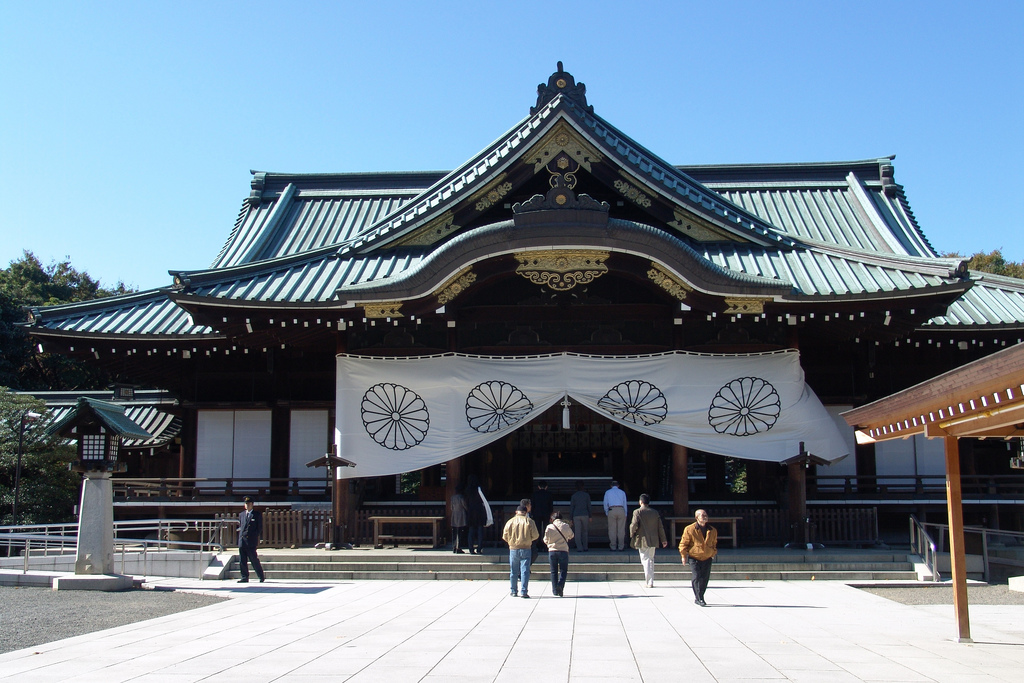
Yasukuni Shrine Tokyo
The entrance to Yasukuni Shrine was impressive, a massive stone torii gate that opened onto a sloping walk into the grounds. First we stopped at the main shrine, a beautiful building draped with large cloths bearing the imperial seal. After that, we strolled through the grounds, looking at all the smaller shrines, the sumo ring, the noh stage, and all the other places for honoring the dead enshrined there. We heard there were over 2.4 million people listed by name in the record books. I thought they were all Japanese, but was surprised to learn that this is not the case. Foreigners who helped the country are also listed with equal importance.
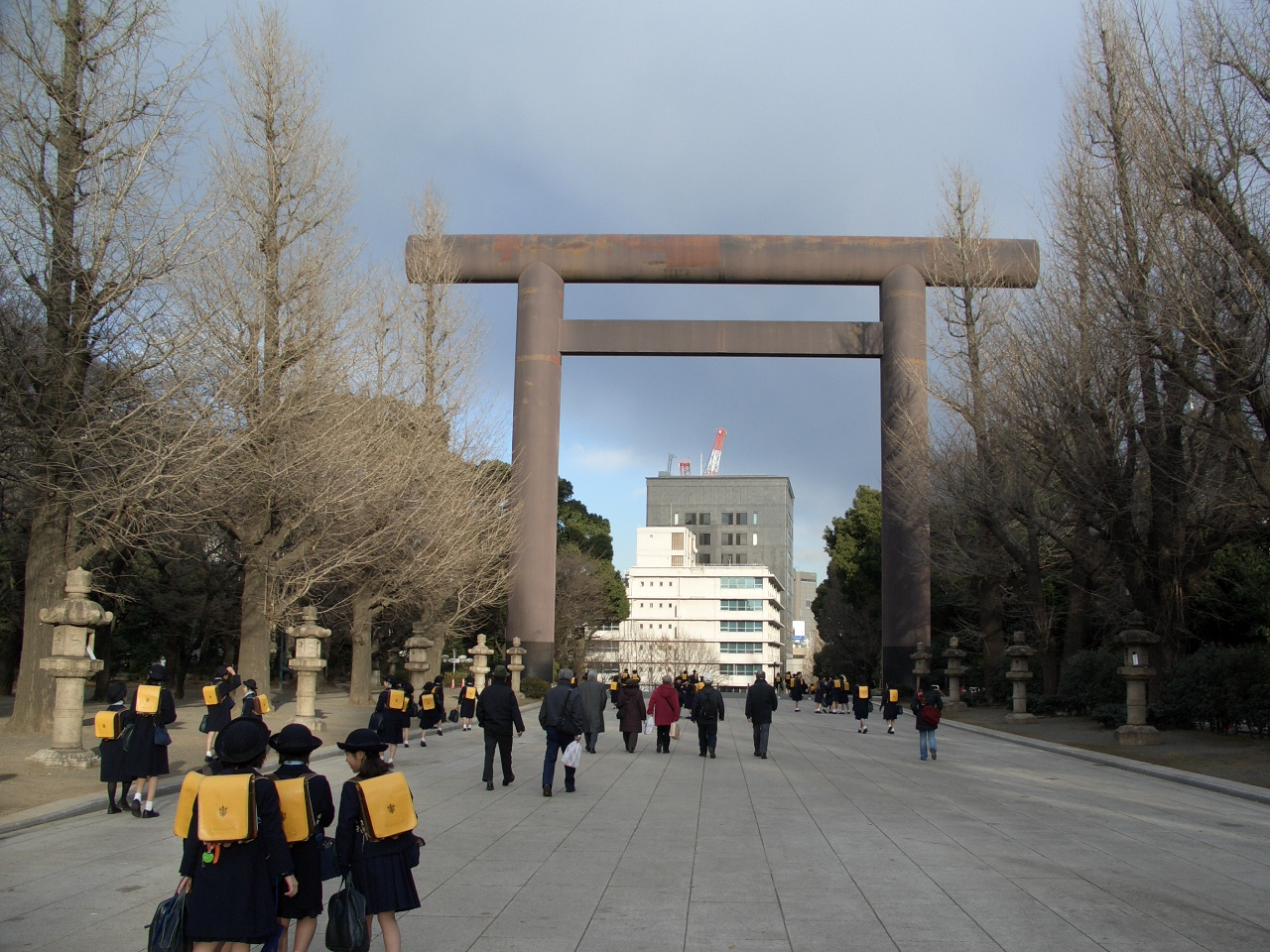
We were taken by the statues to other war victims that most people never even think about. As well as a horse and dog, there was even a statue of a carrier pigeon, representing those that died in service. Another statue depicted the suffering of women who have to raise a family alone because their husband fell in combat. It was sobering to think about all the pain behind those simple bronze monuments on the Yasukuni Shrine grounds.
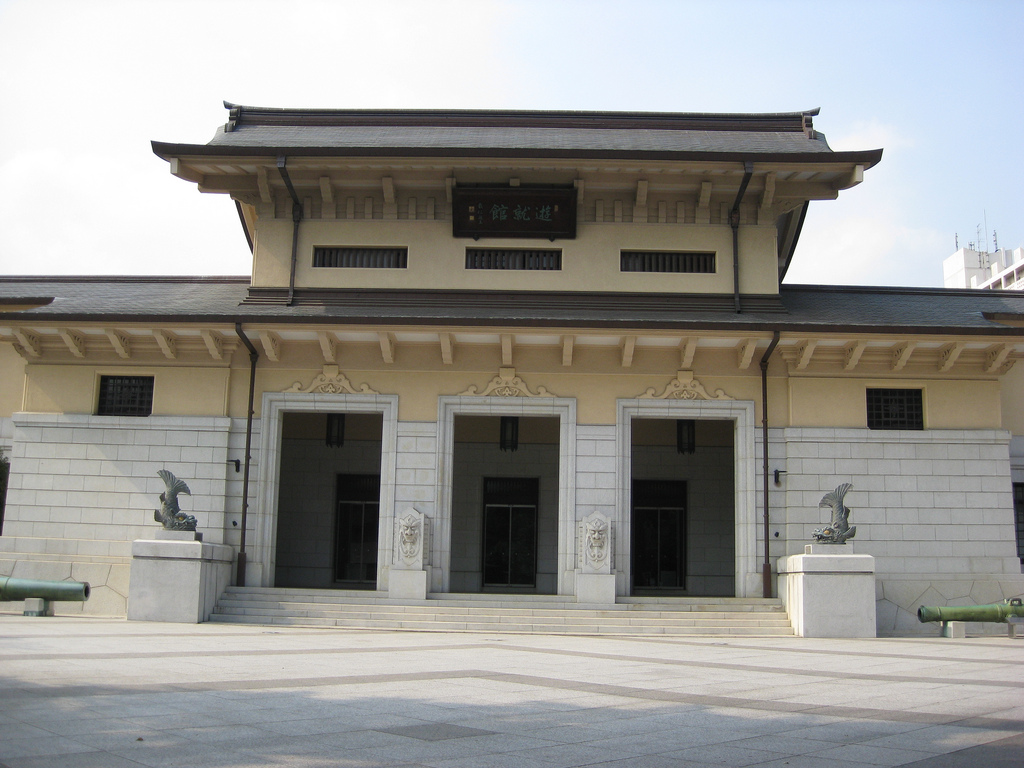
Yushukan
The Yushukan is a museum on the grounds, it was recently remodeled and expanded, so it was much bigger and more impressive than we expected. It was a bit expensive, but was well worth the visit. Everything had a very pro-Japan bias, but I suppose that is normal. Most museums don’t praise the enemy forces.
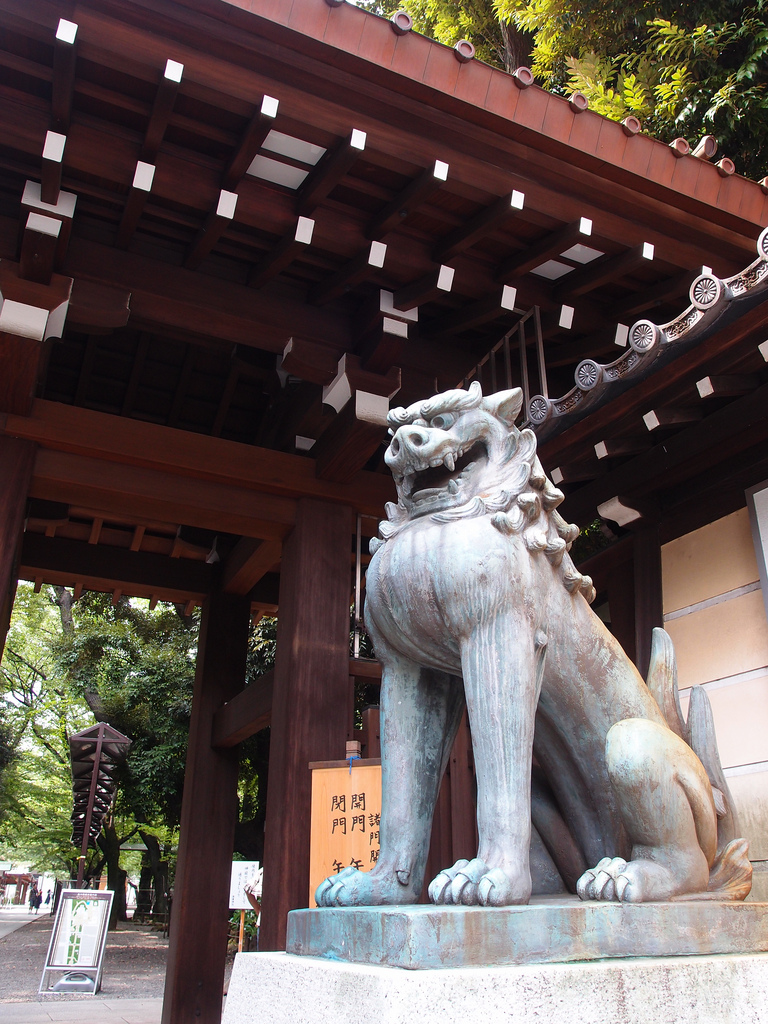
Yasukuni Shrine guardians in Tokyo
It was rather overwhelming, from the videos in the theater area to the thousands of photos of dead soldiers. There was a lot of information and artifacts about the kamikaze pilots and the other special attack forces. I have never had much interest in military things, so it was sobering to get a close-up view of things like the manned torpedoes, which were so claustrophobically small. I felt chilled and realized how very little I knew about the realities of combat.
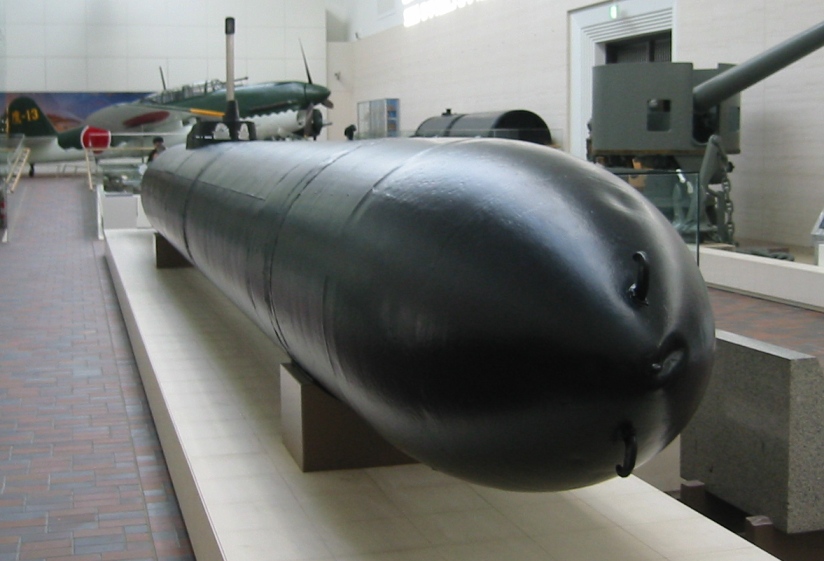
I was glad to get back outside, literally turning my back on the horrors of war. Our next stop was the Imperial Palace, which was within walking distance. We were interested in the East Gardens, which are open to the public for free. Surprisingly, they were not the most beautiful gardens we saw on our trip, despite the important location.
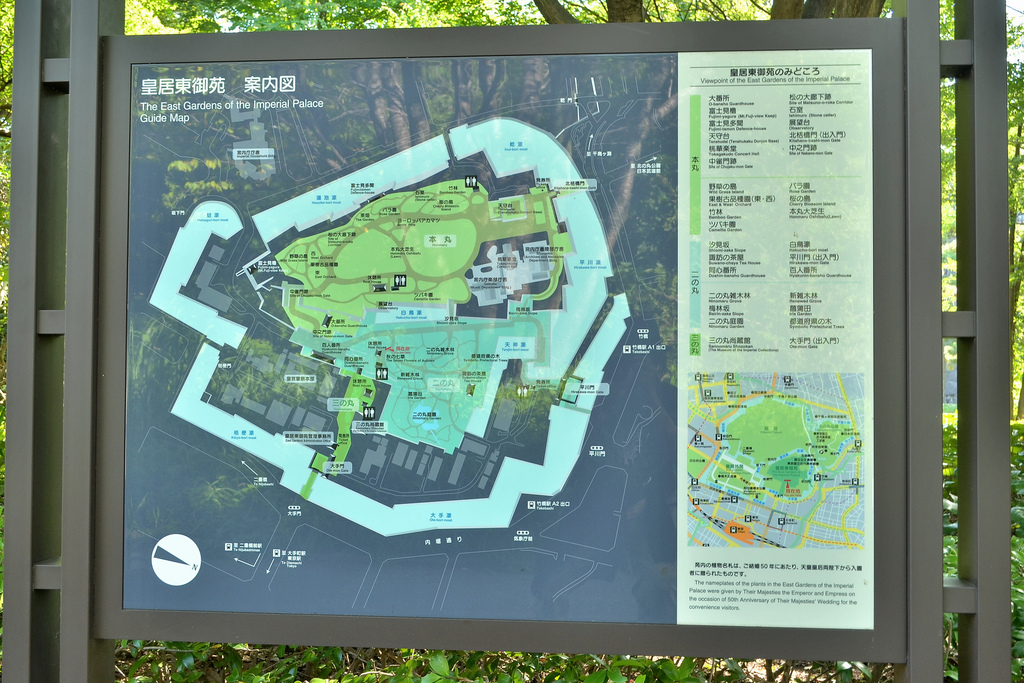
皇居東御苑案内板 (Guide plate East Gardens of the Imperial Palace)
The variety of plants was impressive. There was a section of bamboo, dozens of different varieties, which had Paul grabbing for his notebook. Another area had a tree from each of the different prefectures, and I had fun trying to decipher all the names in kanji, but am afraid I did not do very well. They were all planted together, pines and palms mingling in a way that seemed very out of place. There was another area that was like a tiny glade transplanted directly from a natural forest; indeed, that is what it was.
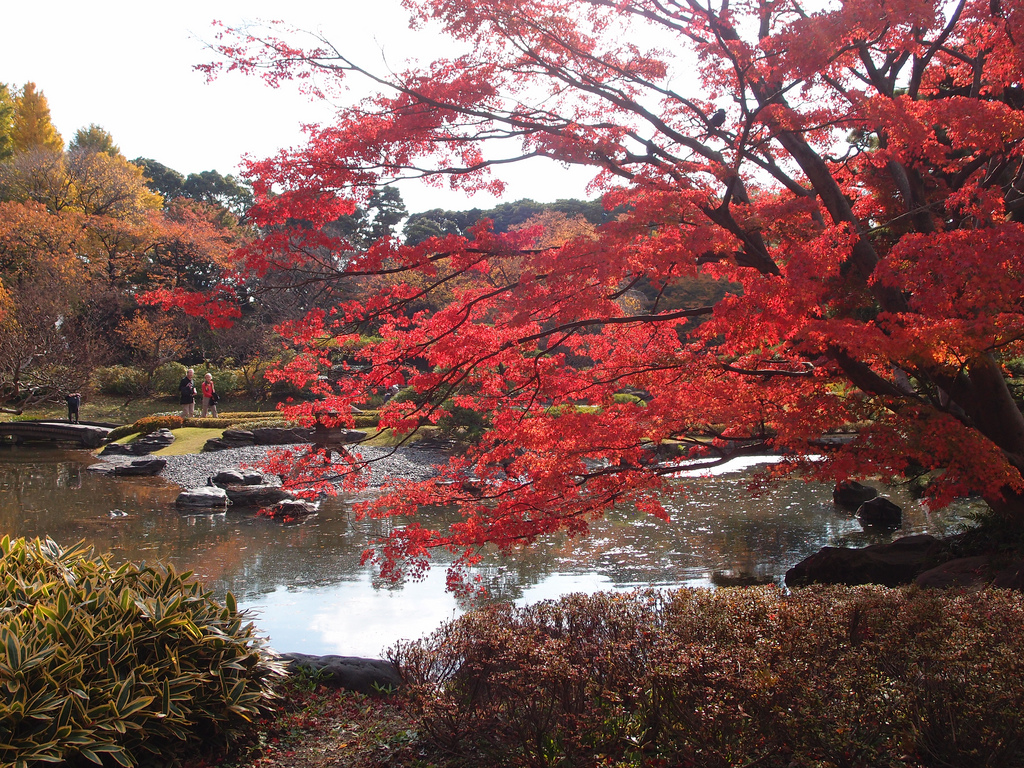
Red maple leaves @ Imperial Palace East Garden @ Tokyo
There were many buildings which also captured our interest. Guard houses, towers, a tea house. When I was a teenager I went to Europe with my parents, so I think the thing that struck me most about the Japanese Imperial Palace was how open it seemed compared to medieval castles. Granted, there were huge stone walls and moats. Plenty of guards were present, but they were less imposing and less showy than the ones in England. I had the fleeting impression that if I could understand what it was like to live and work within those walls, I would understand Japan.
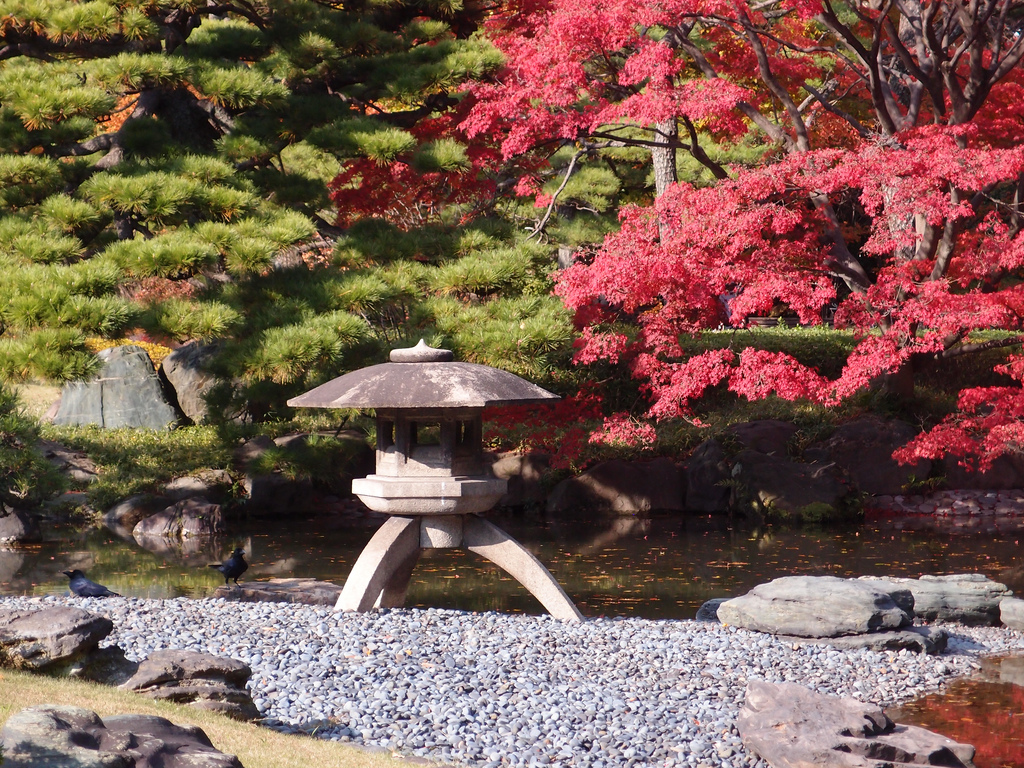
Imperial Palace East Garden in Tokyo
But it was my fate to learn about Japan in other ways. Paul and I had wanted to go to a sumo match, but unfortunately the November tournament is held in Fukuoka, so there was no way we could attend. So instead, we thought that kabuki theater would be a good cultural activity. The venerable Kabuki-za had just reopened this year after several years of restoration. The large white façade seemed out of place among the towering glass and steel skyscrapers, but was very impressive.
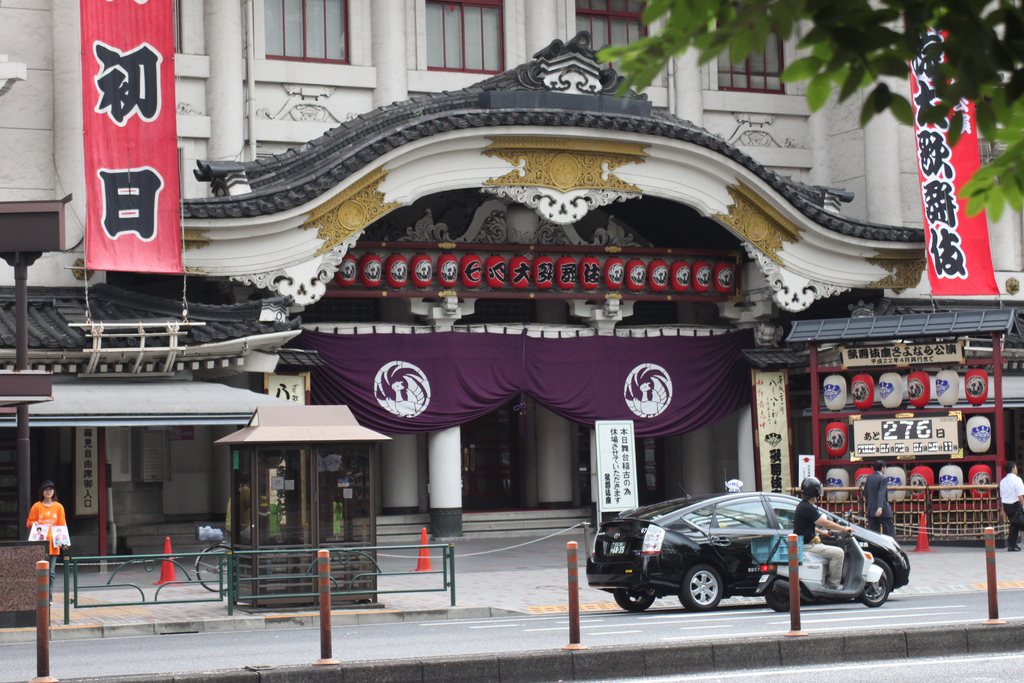
Kabuki-za Front Entrance
To be honest, we were not sure if we would even like kabuki, from what we knew, it seemed so stylized and stiff. So we were happy to find that instead of getting tickets for the full, hours-long performance, we could go to the unreserved seating. It was on the fourth floor, so rather a distance from the stage, but the sound carried well. We decided against the English headphones, relying on the English synopsis of the plot in the program.
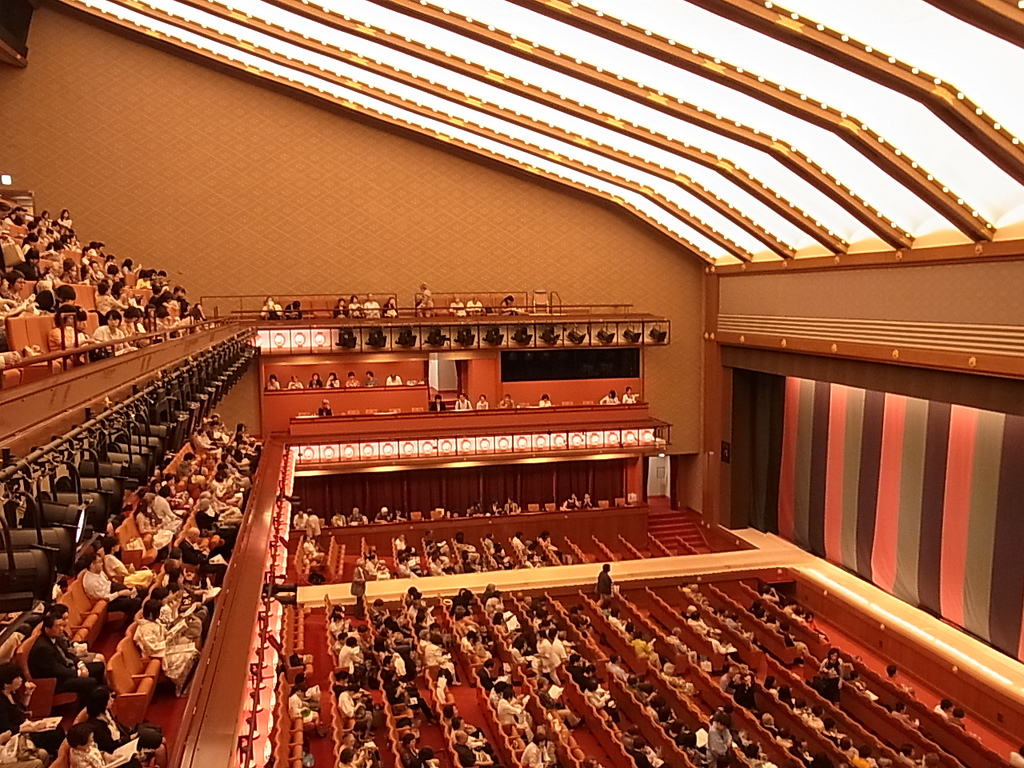
歌舞伎座 Kabuki-za view of stage from unreserved seats
It is hard to describe, because it was what we expected, and somehow more so. The acting was indeed very stylized, with warbling speech that was impossible to understand. But the movements were graceful and bold, conveying meaning and elegance at the same time. The music was exotic, and I liked watching the players, well-lit on the stage. The costumes were bold and almost garish. I was surprised that there were men in black shadowing each actor, adjusting the clothes, handing props, and helping out throughout the performance. I guess they were supposed to be invisible or ignored, but they were also a bit sinister and fascinating to watch, like puppeteers running the action.
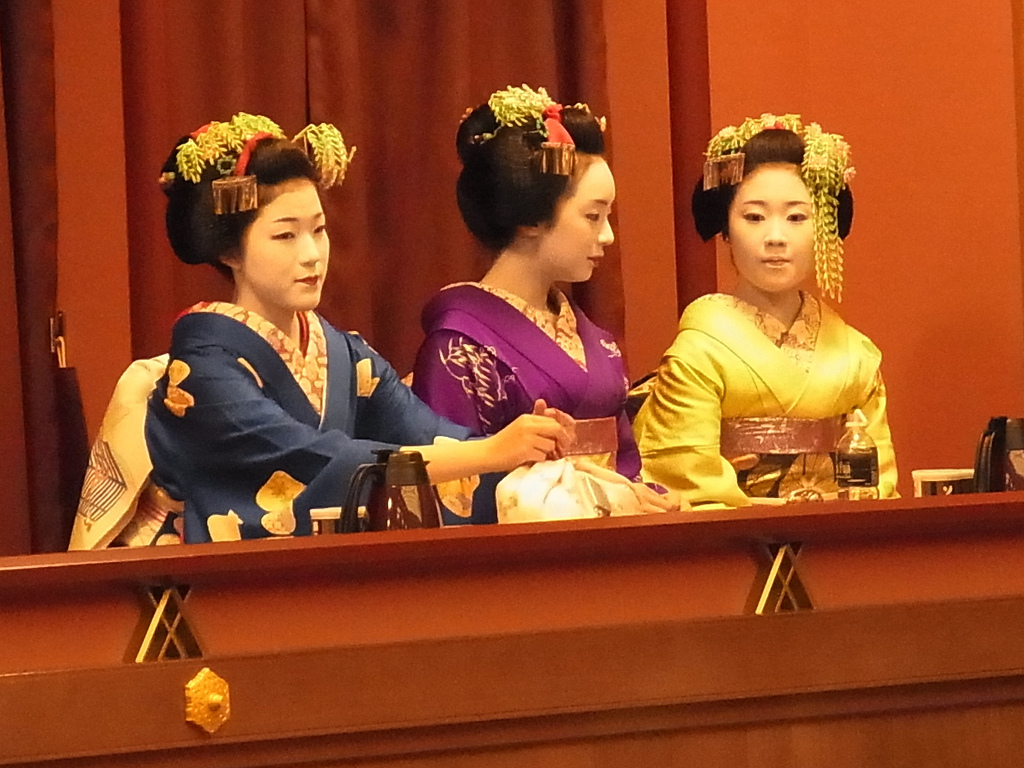
歌舞伎座 Kabuki-za geisha
The crowd was boisterous and yelled out names and encouragement to the actors, applauding and cheering. It was more like attending a circus, except that the audience was beautifully dressed in suits and even kimono. It was my first time to see a man wearing a traditional kimono in public.
The time seemed to fly; we enjoyed it much more than we ever expected. We stayed for several intervals, and noticed signs for a kabuki museum during the breaks. So when we had our fill of the show, we decided to check that out, as it was in the very next building.
None of the signs were in English, which was too bad because we would have appreciated some explanation. However, it was especially interesting to see all the props and costumes up close after seeing them from afar in the theater. It was amazing how large the fans and swords were! The kimono had bright, bold patterns and a lot more detail than I had realized. The museum was a fun side trip to close our kabuki experience and pretty reasonable at only 500 yen per person.
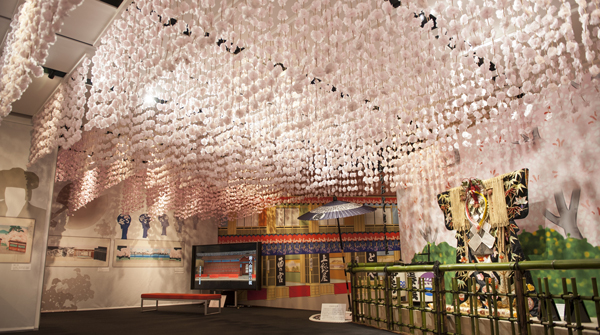
Kabuki-za museum (photo: kabuki-bito.jp)
Paul and I are certainly not into fashion, but since we were in Ginza, we decided to check it out. Window shopping was quite astounding, seeing shoes and handbags priced higher than most of the clothes in my closet at home combined. It seemed that every famous maker had a store there, like Gucci, Cartier, and Armani.
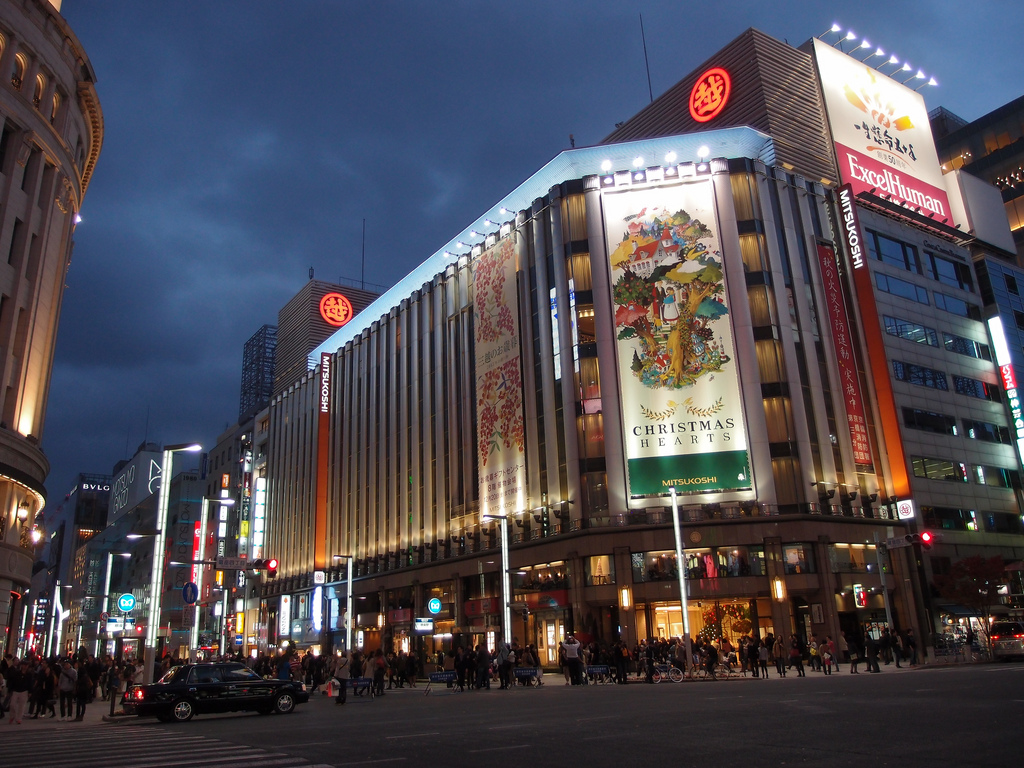
Mitsukoshi @ Ginza
I knew that Ginza was famous for clothes and jewelry, but I was not prepared to see the top end of every product, such as Apple and Sony. Between the stores were restaurants, cafes, and very expensive-looking bars.
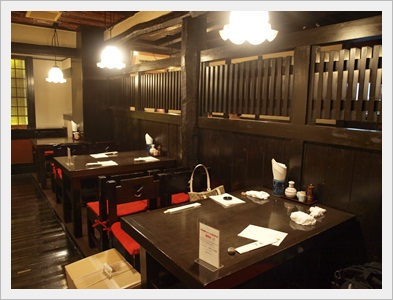
Cartier store in Ginza, Tokyo with Christmas decorations
Our dinner was at a restaurant called Gyuuan, specializing in Kobe beef. Granted we can get good beef back home, but we had heard so much about Kobe beef that we wanted to try it. The restaurant was fun. We sat on bright red pillows on the dark wood floor, our feet in a well under the table. We ordered the “matsu” set meal, thankful that there was a menu in English. The beef was so tender, it seemed to melt in our mouths. It was even pretty to look at, like marble with veins of fat.

Gyuuan, specializing in Kobe beef
The meal was heavy on the meat, but the pickles and salad were good contrasts, and I never turn down a dessert! It was a memorable meal, and I now understand why people rave about Kobe beef.
After dinner we made our way back to Ueno, where we relaxed in the Mitsui Garden Hotel for the rest of the evening. We walked a lot over the last few days, so it felt good to sit down with a cold beer from the local convenience store.
 photos by:
HIRATA Yasuyuki &
Dakiny,
*_*,
urasimaru,
urasimaru,
*_*,
Kouki Kuriyama
photos by:
HIRATA Yasuyuki &
Dakiny,
*_*,
urasimaru,
urasimaru,
*_*,
Kouki Kuriyama